
|
| Accept Cookies | Customize | Refuse Cookies |
Juza www.juzaphoto.com/p/Juza  |
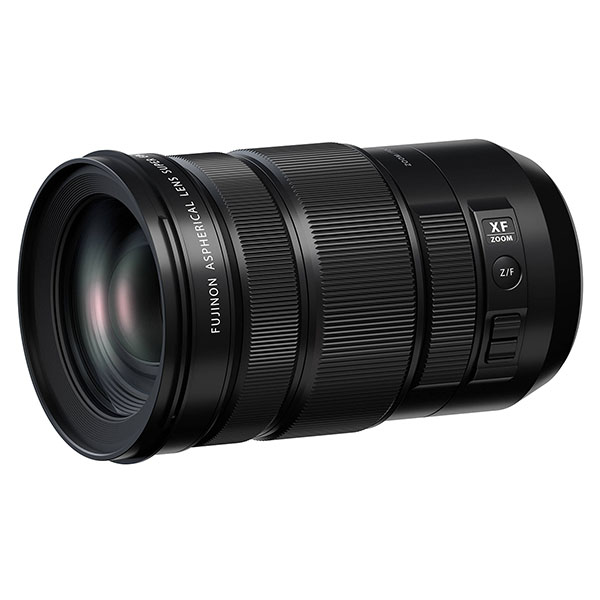 | Fujifilm XF 18-120mm f/4.0 LM PZ WR Pros: versatile focal length range, excellent lightness Cons: very poor sharpness in the corners, motorized zoom (in the photo) Opinion: I tried two copies of this lens in recent months, but I wanted to wait for the publication of other tests to have confirmation or denial of my results (which seemed strange to me). Now that the optics is on the market and various reviews have been published, I see unfortunately confirmed my results: the sharpness is good in the center, but in the corners (and also already in the lateral areas, without reaching the extreme corners) it is really poor, and does not improve even by closing the diaphragm. Taking into account that it is a very recent lens and the range of focal lengths, despite being almost a "superzoom", is not extreme, I expected much better; I do not recommend it in the photographic field, while it can be good for FullHD or 4K videos (but not for 8K), as long as you do not shoot scenes where angles are important (eg landscape documentaries). The power zoom, certainly great for video (we must not forget that this lens was born mainly for the video field), is instead uncomfortable in photography, where it makes zooming slower and less practical. sent on September 28, 2022 |
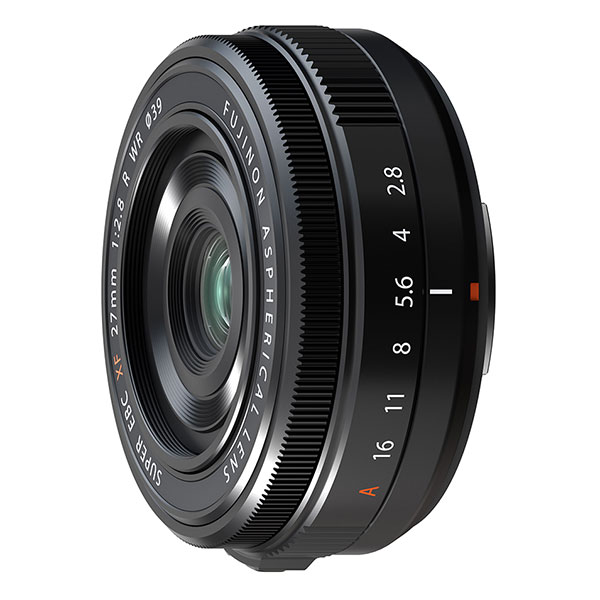 | Fujifilm XF 27mm f/2.8 R WR Pros: sharp, very light and compact, excellent value for money Cons: focal sometimes a bit limiting Opinion: A gem: excellent sharpness already at full aperture and impeccable up to f /8, even on the 40 megapixels of the Fujifilm X-H2. The distortion is very moderate, and if necessary easily corrected via software, as well as the very light vignetting. Despite being a zoom lover, I wanted to try this lens and I really appreciated its quality: it is definitely the best Fuji I have ever tried. It's incredibly compact and lightweight (82 grams!), it's bright, it has fast AF and it's tropicalized. The only limit is, of course, the focal length: it is equivalent to a 41mm on fullframe, and to have a good coverage it must be combined with other optics (I would see it well in a kit together with the Fuji 14mm f / 2.8 and 50 f / 2.0). For lovers of fixed and for those who want quality without compromise, I recommend it without reservations! sent on September 09, 2022 |
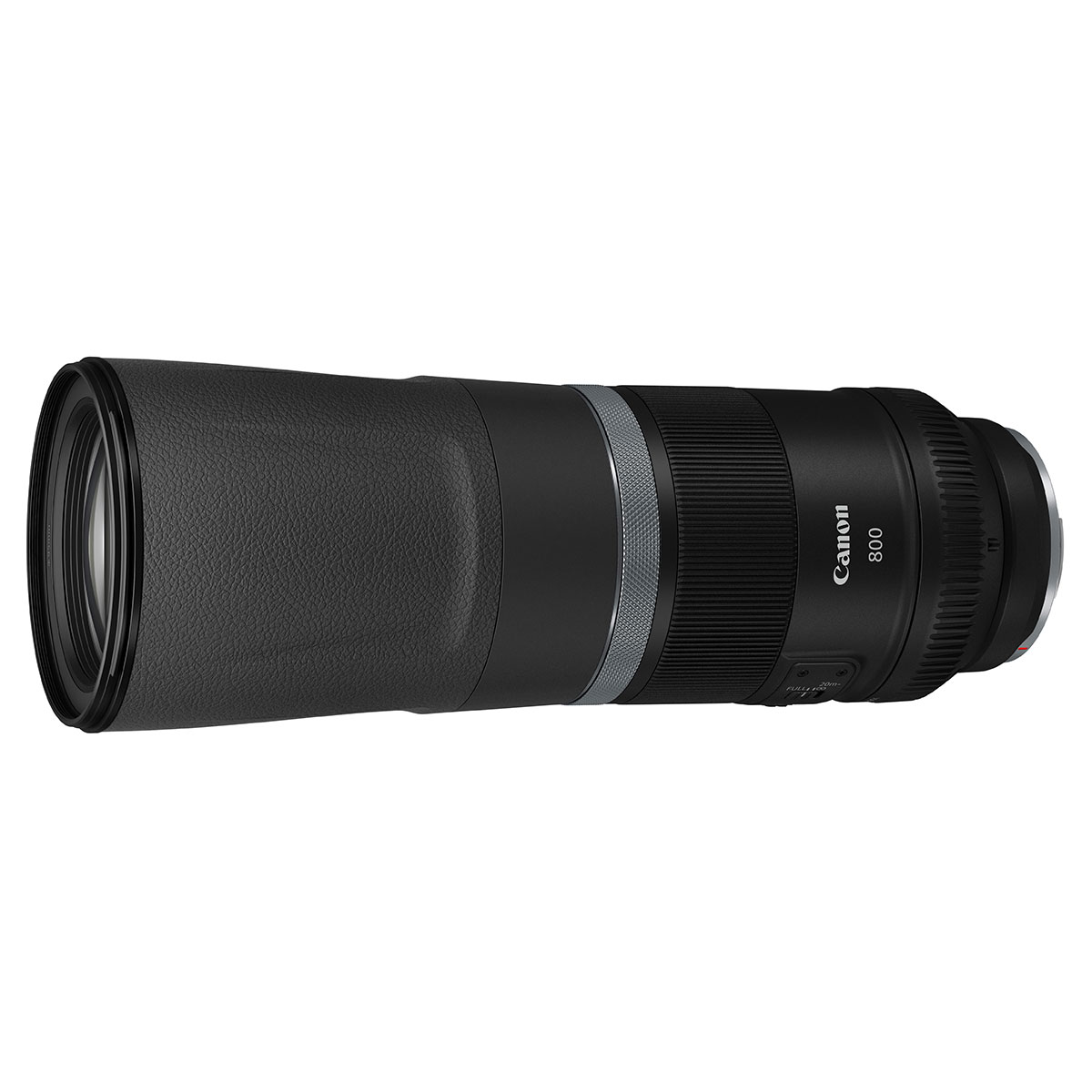 | Canon RF 800mm f/11 IS STM Pros: long focal length, lightness Cons: mediocre image quality, F11 fixed aperture, ineffective stabilizer Opinion: The Canon RF 800mm f/11 IS STM is a rather unusual supertele: it has a fixed aperture F11, it is very light (1260 grams are very few for an 800mm!) and has a not very high price. The focal length makes it ideal for birdlife, but the merits end there. The build quality is from amateur optics, very plastic; the AF is acceptable, while the stabilizer seems to me not very effective, and the microwavy is always lurking, also because of the very low brightness that forces you to use long times or to raise the ISO even in full sun. The image quality is mediocre, although the results may vary depending on the situation: in ideal conditions (strong and direct light, fast time) the quality can be discreet, but in most cases it will be unsatisfactory, at least on the R5 (45 megapixels) with which I tested it. The results would certainly be better on the R6 and other less demanding sensors, around 20-24MP. Overall, it is a lens that I do not recommend; for the same price you can take Tamron or Sigma 150-600mm f/5-6.3 DG, much more versatile and bright lenses and with equal or higher quality. sent on May 28, 2022 |
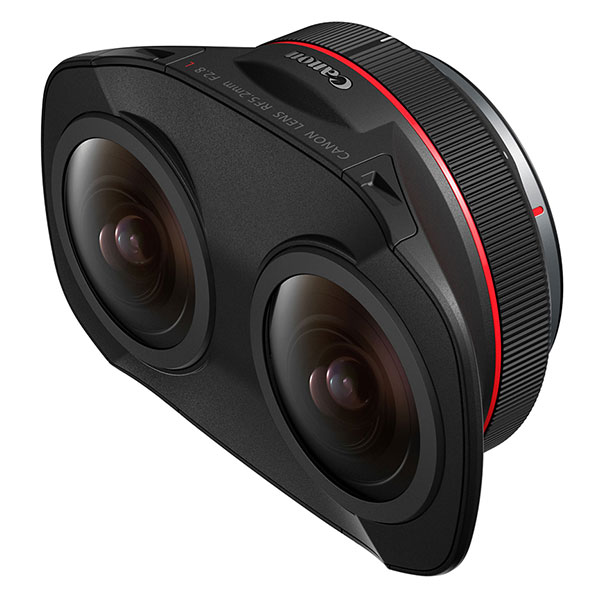 | Canon RF 5.2mm f/2.8 L Dual Fisheye Pros: good quality and one-of-a-kind optics Cons: manual focus Opinion: The Canon RF 5.2mm f/2.8 L Dual Fisheye is a truly unusual lens - it is a double fisheye designed exclusively to make videos for virtual reality, to be watched with a special viewer. The two twin lenses are arranged at the same distance as the human eyes, in order to capture the scene with the same parallax of our eyes, and then be able to reproduce it in a realistic way. It is a lens to be combined with the R5, or even better with the R5C on which I tested it, since the two images that are generated will then be cropped to provide the final double video, and since you use a small part of the sensor it is better to start from the highest possible resolution. The image quality is good - in line with other circular fisheyes - and is a professional and surprisingly light build quality optics. If we really want to look for a flaw, it is devoid of AF, but probably it would have been impossible with a similar optics because of its peculiar construction. Given that it is a video lens, I must say that it intrigued me and I had never found online any full-resolution photographic sample ... so I wanted to try it for myself. The result is very curious and, why not, someone could also think of exploiting it creatively in the photographic field :-) sent on May 27, 2022 |
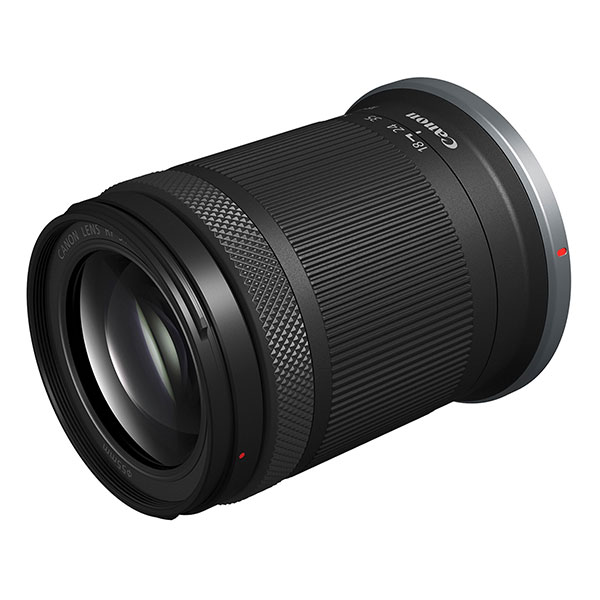 | Canon RF-S 18-150mm f/3.5-6.3 IS STM Pros: Excellent quality for a superzoom, lightweight, compact, stabilized, fast and silent AF Cons: Poorly usable macro mode Opinion: The second lens announced alongside the mirrorless APS-C RF is the 18-150mm, a superzoom equivalent to a 29-240mm. The focal length range is extremely versatile, and the dimensions are incredibly small - it's slightly larger than an 18-55 SLR kit! He also has STM autofocus and stabilization; it is essentially the EF-M 18-150mm adapted to RF-S (the optical scheme is exactly identical). The macro capacity is even up to 0.59X, but it is not very usable: it is reached only in manual focus and at the 50mm focal length, being about 4cm (working distance) from the subject. In addition, as often happens with "macro" superzooms, the image quality is good in the center but totally unusable just outside the central area: let's say that it is good for occasional macros (as long as you crop and keep only the center of the photo, a portion of about 6 megapixels). Outside of the extreme macro, however, the image quality is very good: it has a good sharpness at all focal lengths, already at the most open aperture. Overall, I think it's a great superzoom, an ideal lens for those who travel and want a lens with which to photograph a wide variety of situations (perhaps combining it with a wide angle to cover focal lengths below 29mm). sent on May 25, 2022 |
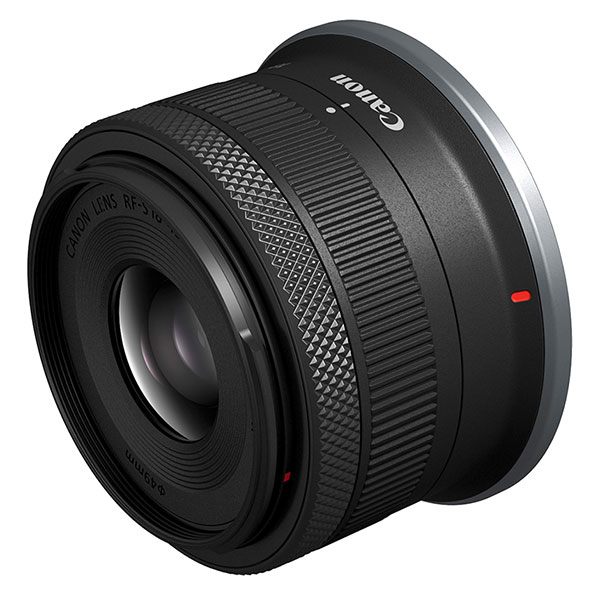 | Canon RF-S 18-45mm f/4.5-6.3 IS STM Pros: Sharp, lightweight, compact, fast AF, stabilized and economical Cons: Quite plastic construction, not very bright Opinion: With a new APS-C series you can not miss the entry-level zoom, and like all lenses of the genre has a fairly 'cheap' construction. However, we must not underestimate, nor denigrate by party taken, this perspective. In 130 grams and 4cm you have a lens equivalent to the classic 28-70mm; the AF is fast and quiet, and there is also stabilization: what more do you want? :-) The diaphragm is not very bright, but more than enough for general use, and indeed in different areas it will often happen to close further. But the image quality? It is very good, the lens is sharp at all focal lengths, even at the most open apertures. If you want maximum lightness, perhaps in combination with the R10, I think it is a great choice. sent on May 25, 2022 |
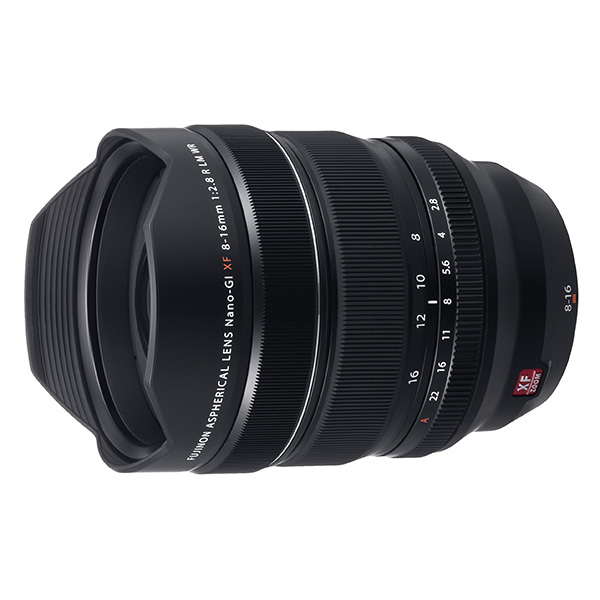 | Fujifilm XF 8-16mm f/2.8 R LM WR Pros: Construction, good image quality, brightness, angle of view Cons: Dimensions and weight Opinion: The Fujifilm XF 8-16mm is the most extreme wide angle in the Fujifilm APS-C system, where it equates to a 12-24mm. The extraordinary angle of view allows otherwise impossible shots, and the versatility of the zoom gives ample compositional freedom, all without sacrificing quality: the sharpness is very good at all focal lengths and all apertures - taking into account that currently (April 2022) Fuji has no fixed on the shorter focal lengths covered by the 8-16, it is certainly positive to know that this zoom does not regret the quality of the fixed lenses. The distortion is very small, although in some rare cases (eg perfectly flat horizon, such as the sea) it can be noticed, but it is still possible to correct it. Vignetting and chromatic aberration are practically imperceptible. The f/2.8 brightness, combined with the good high ISO performance of modern Fujifilm cameras, allows you to shoot excellent nighttime, and this is why in several of my travels I preferred it to the lighter and more compact 10-24mm. The build quality is impeccable: sturdy, solid, tropicalized. The hood is incorporated and serves above all to protect the front lens, visibly curved; the latter, however, makes it impossible to use filters, unless you mount bulky adapters for plate filters (I do not use filters so for me it was not a problem). My only criticism of this lens is that it is quite large and heavy, almost at the level of fullframe optical equivalents. sent on April 25, 2022 |
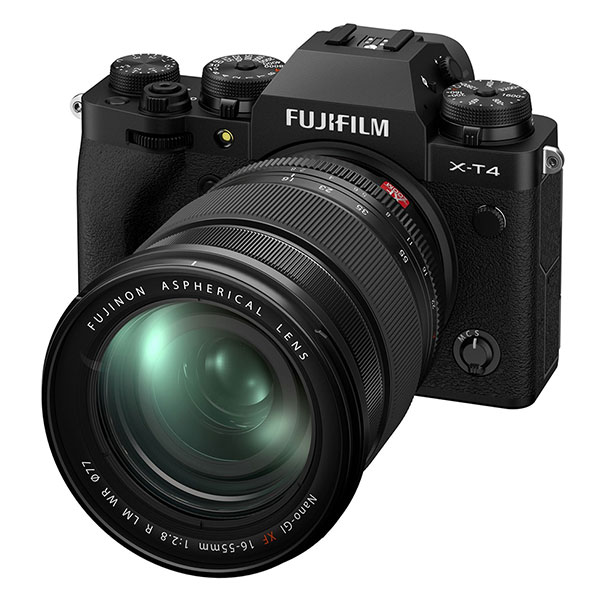 | Fujifilm X-T4 Pros: Image quality, good AF, articulated screen, larger battery Cons: Unintuitive menu system; limited magnification in playback Opinion: The X-T4 is a significant step forward compared to the previous model: while using the same sensor, it adds image stabilization and a hugely larger battery (it goes from 8.7Wh to 16Wh). The latter is something that really makes the difference in the field: despite not having the autonomy of other flagships, it is still much better than the X-T3, and allowed me to shoot for a long time (taking full advantage of the LCD screen) without worrying about running out of battery. The image quality is at the level of the best APS-C sensors: fully usable up to 3200 ISO, or even 6400 in the right conditions and provided you accept a little grain. RAW files, with the default option (uncompressed) are very heavy - about 55-60MB - so it is worth considering the lossless and lossy compression options as well; as a source of an almost imperceptible decrease in quality, the weight of the file is halved. The workability of the files is excellent; we have a wide dynamic range and good resolution. During my test, I used the X-T4 in two areas: landscape and portrait. For portraits (in combination with the 50 f/1.0) I made extensive use of the eye-AF and I greatly appreciated its precision and good speed; in the landscapes obviously there is no way to thoroughly test the autofocus, but even here I appreciated the accuracy, since in playback the possible magnification is more limited than the average, and it is difficult to be sure of a perfect focus (but fortunately I did not have bad surprises). As for the interface, the Fujifilm system is quite different from the other mirrorless, with more rings and manual controls; it takes a little time to get used to, but once I took the hand I had no difficulty. I greatly appreciated the fully articulated screen, which I personally find more comfortable and flexible than the partial joint used by previous Fuji. My main criticism of this model (and Fuji in general) is the menu system, which I find less intuitive than the competitors; even the custom menu inexplicably does not allow you to add some functions, including formatting tab (which I use very frequently). Overall, the impression on the X-T4 is positive, and it is the camera that I would recommend to those who want to build an APS-C kit: Fujifilm is the only brand that is really developing this format, and has the best range of APS-C lenses among the current mirrorless. sent on April 24, 2022 |
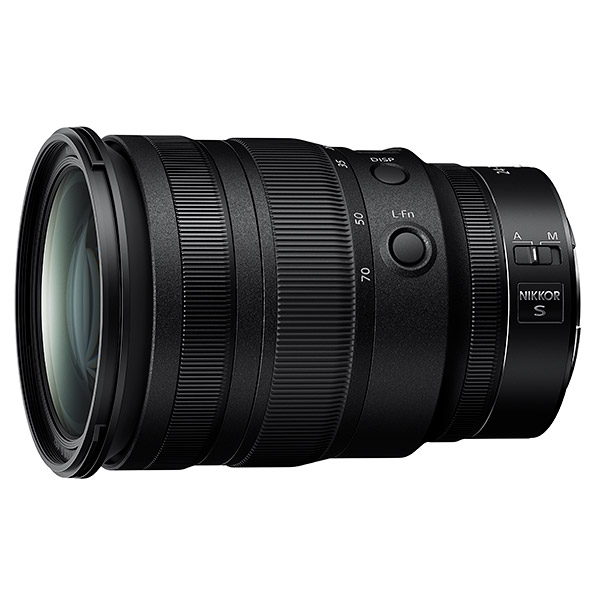 | Nikon Z 24-70mm f/2.8 S Pros: Sharpness, build quality, brightness Cons: Quite expensive and heavy Opinion: For those who want the highest quality, the Nikon Z 24-70 f/2.8 is the best standard zoom you can have in the Nikon Z system: very sharp and with excellent construction quality; robust and tropicalized. The image quality is excellent at all diaphragms, already at f/2.8 it is very sharp and the only significant improvement that can be seen by closing the diaphragm is the reduction of vignetting. Price and weight are quite high, but it is inevitable from such an perspective; for those who prefer a more compact alternative there is the excellent 24-70 f/4, equally sharp but much more compact and light (but of course you have to give up the brightness f/2.8). I recommend it especially to those who use cameras with high-resolution sensors, able to fully enhance the quality of the 24-70 f/2.8. sent on June 27, 2021 |
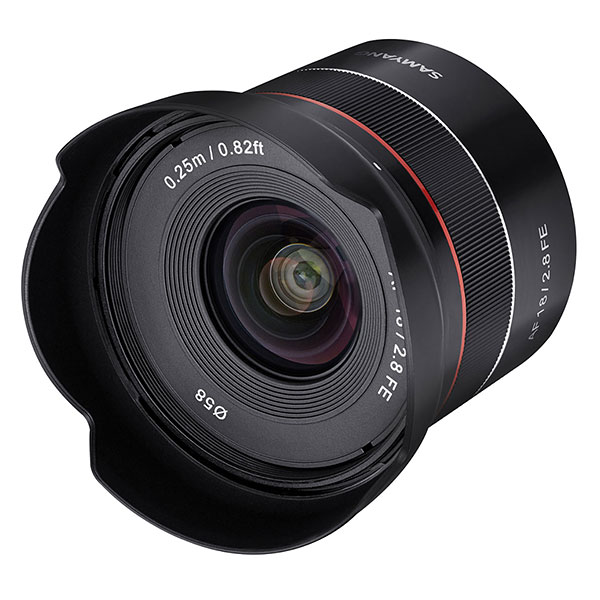 | Samyang AF 18mm f/2.8 FE Pros: Crisp, light, compact and inexpensive Cons: Variability between copies Opinion: I chose the Samyang 18mm f/2.8 as a wide angle to combine with the A7C to have an optics that could also be used at night, but that at the same time was extremely compact and light: with its 145 grams of weight, this lens is really unbeatable. The sharpness is amazing, great at all diaphragms, already at f/2.8 it is very good. The price around 350 euros makes it very competitive; in this price range it is difficult to find such good optics. The only downside is the variability between the various specimens: I have seen various evidence of copies that have much worse clarity than mine; I therefore advise you to buy it from a retailer that gives you the opportunity to change it in case you find any defects. sent on March 03, 2021 |
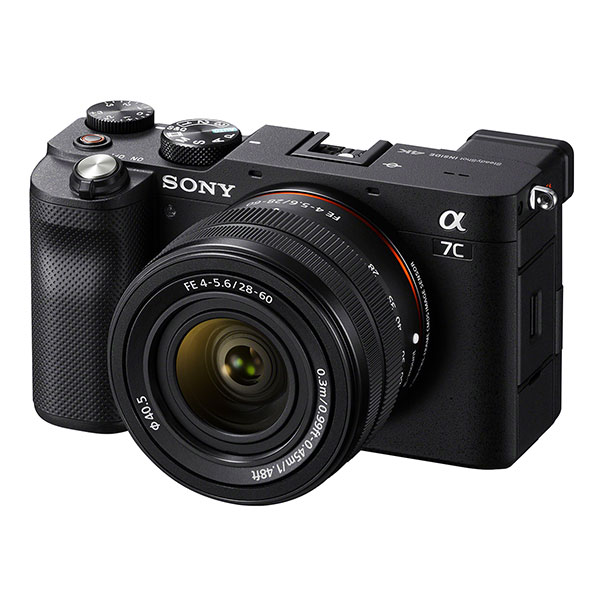 | Sony A7C Pros: Quite light and compact, great image quality, great AF, stabilization, fully articulated screen, great battery life, USB-C charging Cons: Slow charging, missing ND-in camera function, limited touchscreen Opinion: After taking the Sony A5100 for many years, I chose to switch to the Sony A7C as my personal camera: this model maintains a good compactness (although it is inevitably not as small and light as an APS-C) and offers a great combination of image quality and functionality. The sensor has a wide dynamic range, good resolution and excellent yield at high ISOs; in-camera stabilization is a great help and the AF is very fast and very precise (outstanding eye-AF functionality). The battery life is such that it allows for long sessions without having to recharge, and when necessary it can be charged directly from the USB-C socket (although it is quite slow). Among other features, I really enjoyed the fully articulated screen, the electronic shutter and the wide possibility of customization. Overall, I think it's an excellent alternative to the A7 III (which one to choose depends on personal preferences) and one of the best cameras in the current Sony system. (here I published the full review: www.juzaphoto.com/article.php?l=it&t=3808774) sent on December 21, 2020 |
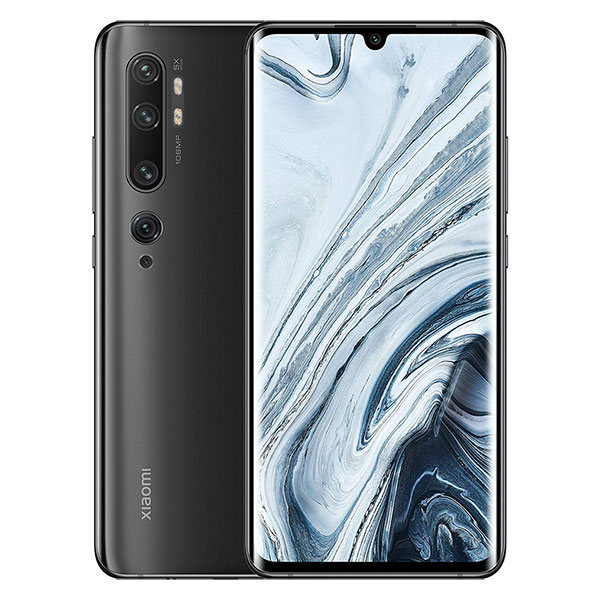 | Xiaomi Mi Note 10 Pros: Huge photographic potential, versatile focal points from 13 to 125mm, value for money Cons: You need some attention to get the most out of the cameras; lack of waterproofing Opinion: I switched to the Xiaomi Mi Note 10 after using Samsung for years: this model impressed me for the exceptional value for money (400 euros!) and for the four cameras, 13mm, 25mm, 50mm and 125mm equivalent, including the main camera with 108MP sensor (which returns photos at 27MP). The photographic results that can be obtained are impressive, at the level of the best compacts; however, to get the best you need to shoot in RAW, better if with alternative apps (GCam). If you shoot automatically with the Xiaomi stock app and in JPEG, the results are good with the main camera and mediocre with other cameras. As a phone it is great, very snappy despite the Snapdragon 730 processor not being a top of the range; very beautiful from an aesthetic point of view and well built (sin only for the lack of waterproofing). It is quite heavy (200g), but this is also due to the presence of a large battery that provides excellent range. Overall, I am very pleased with this choice, an exceptional photo smartphone at a hugely lower price than the top of the Samsung/Apple/Huawei range. sent on March 15, 2020 |
 | Nikon Z 24-70mm f/4 S Pros: Crisp, compact, lightweight, fast AF, weather sealed, low price Cons: Focal range not very long Opinion: One of the best standard zooms I've ever used-definitely the best from the standpoint of image quality. Also on the Nikon Z7 's 45 megapixel sensor, it's razor-sharp at all focal lengths, from corner to corner! It is also exceptionally light and compact (only 500g and nine inches from closed); The AF is fast and quiet and finally it is weather sealed, which allowed me to use it even in the rain without worries. The price around 1000 euros is really good for a view of this quality. If we really want to search for a "defect", the range of focal 24-70 in some situations is a little limiting, personally I prefer the 24-105, but taking into account all the aspects in which excels the Nikon Z 24-70mm F/4 S, I would say that he deserves the highest marks. sent on February 02, 2019 |
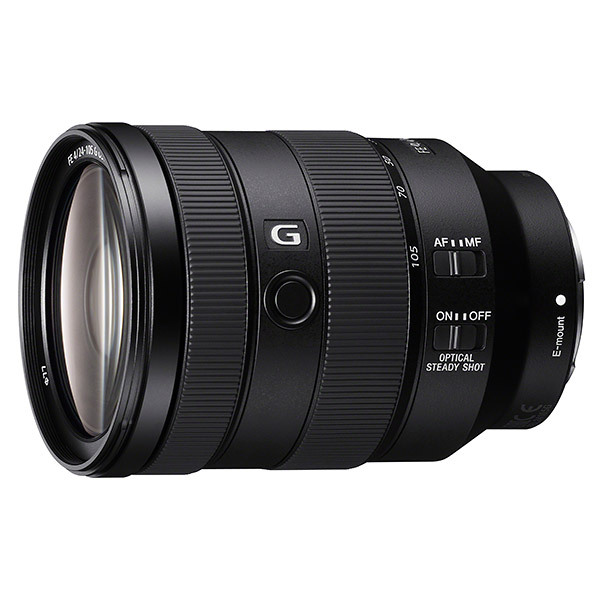 | Sony FE 24-105mm f/4 G OSS Pros: excellent build quality, fast and silent AF, stabilizer, versatile focal range, weight and size not excessive, very good image quality Cons: variability between copies (on three copies tested, one was defective) Opinion: I tried three copies of this lens, the first in test at a Sony presentation (on A7rIII) and the second one bought personally (then replaced by a third). The build quality is excellent; the AF is extremely silent and fast; is equipped with stabilizer and the focal range is perfect for the fullframe, but very good even on an APS-C, when combined with a wide-angle zoom. Even the weight and size are not excessive, making it a great travel zoom. I found, however, variability between the copies: the first I tried was really good, clear from corner to corner at all focal lengths, even at f / 4. The second one, to say the least, was mediocre: at some focal length the sharpness "came and went" in different areas of the frame, and to others focusing on the left side the right side went out of focus, probable signal of an offset lens or however faulty. The shop where I bought it replaced the faulty copy with a new copy, which proved to be much better, inline with the first I had tried at the Sony presentation. The sharpness is very good at all focal lengths; the main defects are distortion and vignetting, both quite marked but still correctable via software. sent on February 07, 2018 |
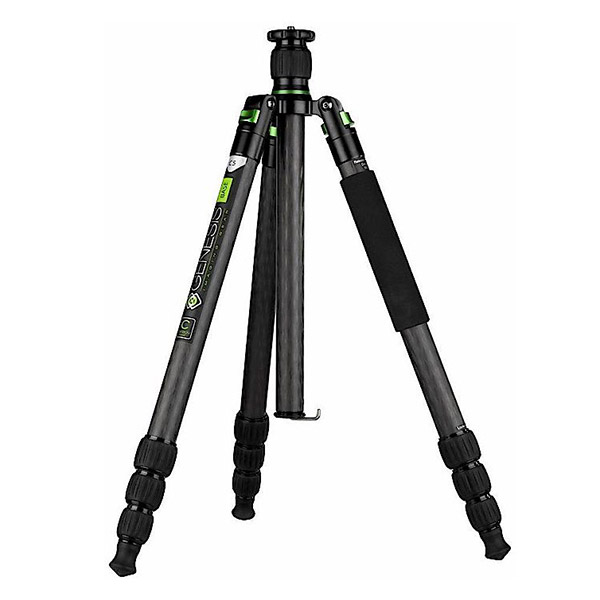 | Genesis C5 Pros: robust, stable, high, exceptional value for money, relatively compact size Cons: nobody Opinion: A tripod with exceptional value for money! The Genesis C5, made of carbon fiber, currently costs about 200 euros and promises a load of 30 kg. The first impression, just taken in hand, is very robust, even for the generous dimensions of the legs: the larger section has a diameter of 32mm and even the thinner does not drop below 20mm! Despite the "massive" legs, however, the weight is not exaggerated (1.7kg, head out) thanks to the use of carbon fiber, both for the legs and for the central column. In addition, the legs can be rotated by 180 degrees to close the tripod with the head between the legs without this protruding; so doing the tripod measures "only" 54 inches closed (including head), a reasonable length for a tripod in this category. With the standard column the maximum height is 183 centimeters, and even without extending the column we reach 160cm (which then become 175-180 with the head% 29; the minimum height is around 40 centimeters but can be greatly reduced by replacing the standard column with a short column (supplied) that allows the tripod to be lowered almost ground level. Alternatively, you can also use the upright column, rotating your legs by 180 degrees. The legs are in four sections and use the classic lock-and-release mechanism; I personally find the lever system slightly more intuitive, but you also get used to the rotating system, which I have been using for years with other tripods. To conclude, we come to the reach: Genesis declares 30kg, an extremely high value. The tripod is really very robust, but I think the 30kg range, keeping the maximum stability, can only be with the legs not too angular; if you open your legs with a strong angle, as when working at the minimum height, it is difficult for the tripod to support this weight perfectly. But in practical use, do notit will never happen to get to this weight, even with supertels and heavier machine bodies hardly exceed 7-8kg, which the Genesis C5 can easily carry with any tilt and extension of the legs. In conclusion, if you're looking for a high-quality tripod and robustness for heavy-duty optics, crawling photography, or even landscaping where weight and bulkheads are not a top priority, I definitely recommend the C5, a great product at an unbeatable price. sent on October 11, 2017 |
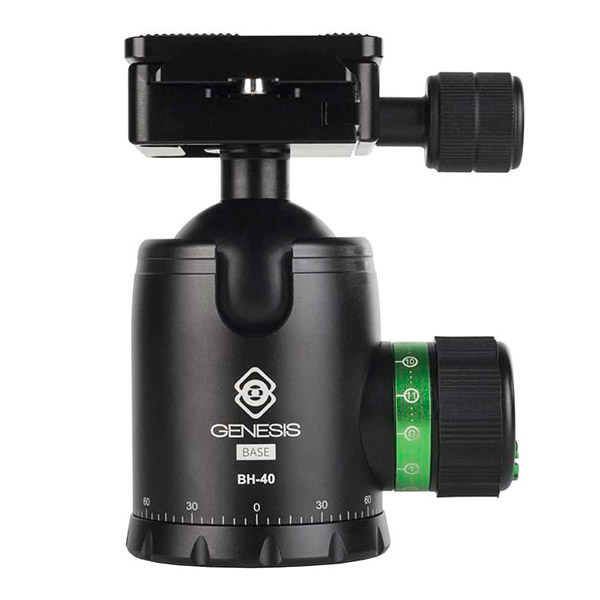 | Genesis BH-40 Pros: exceptional value for money, relatively compact and light, great scope Cons: nobody Opinion: The Genesis BH-40 has a really amazing value for money - I think for 60 euros it is impossible to find better ... It's 10 inches tall and weighs less than half a kg, with a declared flow of 30kg. To find similar features in the heads of other brands you have to spend at least 200-250 euros! I could try it in person and I must say that it made a great impression on me: the construction quality is very good; the movements are fluid, and once the knobs are tightened, it is really "rocky". It is possible to adjust the rotation separately, which is useful in panoramas or in situations where you want to combine more photos; The fastening plate is of the "Arca Swiss" type, which is by far the most widely used standard. Finally, it is equipped with bubble level to help keep the camera right. The declared capacity of 30kg is really something enormous, to the point of seemingly unrealistic ... even though it does not have any lens that approaches even distant(Canon 800mm + Canon 1DX does not exceed 7kg), I have to say that once locked is really "firm", the camera attack does not even move with it as much force as possible. So I have no way of confirming the 30kg range, but certainly for photographic use, even with supertele, it has no problem with weight. Obviously, it's not a head for everyone: if you use lightweight lenses and cameras, even more compact models are enough and advance; However, if you want a "rocky" head for cameras and optics of any weight, the BH-40 offers exceptional quality for its price. sent on October 03, 2017 |
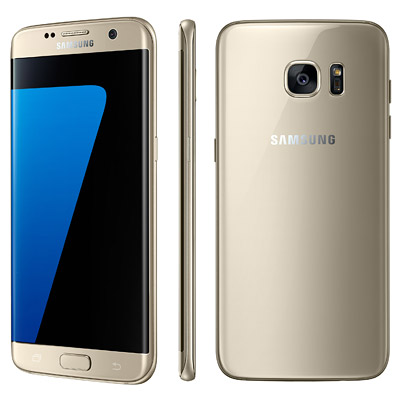 | Samsung Galaxy S7 Edge Pros: AF fast, good image quality (even in low light, to be a cell phone), very fast and complete camera, in great smartphone complex Cons: quite modest resolution, lack of USB-C port Opinion: Using the Samsung S7 Edge since it came out on the market and overall I am very satisfied; in terms of smartphones it is fast, well built and very nice aesthetically, the only lack is the USB-C port (the old-fashioned micro-USB is still used). As for the camera, something essential for me, the S7 is currently the best smartphones out there: the image quality is very good, and shooting in RAW can also be used for photo 'series'. Compared to other cell it has a good yield even in low light, aided by the light from the lens and image stabilization. The camera interface is complete with all the manual controls, it is very fast and has an AF-type 'dual-CMOS' that has nothing to envy to that of SLR. Despite being very satisfactory, however, it is not free from defects: for macro shooting the image quality will drop remarkably; NoNo, you can adjust the aperture to have a greater depth of field, and finally the 12-megapixel resolution is relatively low by today's standards. sent on July 04, 2016 |
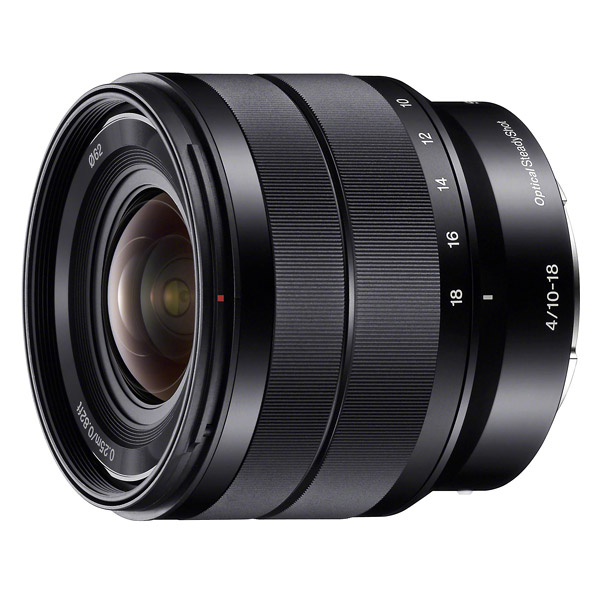 | Sony E 10-18mm f/4 OSS Pros: very compact, lightweight, fast and quiet AF, stabilizer, relatively bright Cons: a little less sharp and 'large' compared to the Sigma 8-16 that I used previously. Opinion: After photographing for many years with the Sigma 8-16 (I consider the best wide angle for APS-C), I chose to go to the Sony 10-18 for various reasons: to avoid the use of adapters, reduce the overall dimensions and weight ( Sony 10-18 Sigma weighs a third of 8-16 + adapter and is along the middle). At 225 grams, the Sony is really a featherweight; despite this it is a brighter stop of the sigma and is also equipped with image stabilization. In the past I had avoided this lens because the tests I had seen showed a very poor quality; perhaps Sony has improved over the years because the copy I bought is more than good - is a less clear coat 8-16 in the corners, but overall it is fully usable at all focal lengths and all the diaphragms. If you have a Sony APS-C camera, I definitely recommend buying this wide angle. sent on July 04, 2016 |
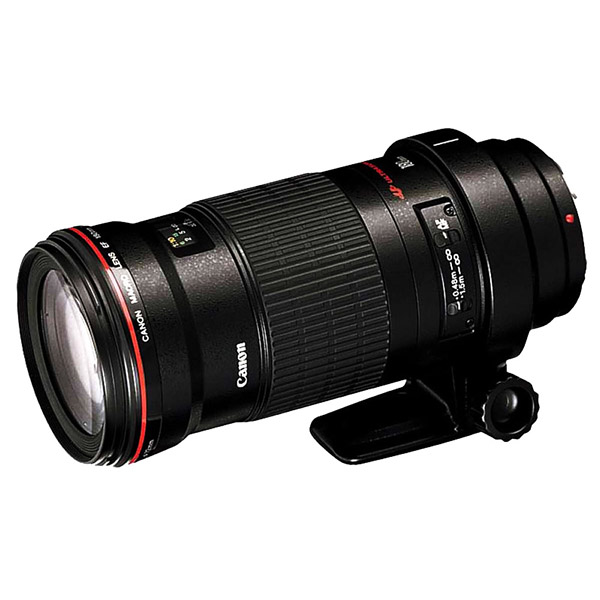 | Canon EF 180mm f/3.5 L Macro USM Pros: image quality, quality construction, working distance and yield of the background, compatible with teleconverters Cons: high price (there are excellent alternatives at a lower price) Opinion: The Canon 180 Macro has been for many years my main macro; from the image quality point of view it is really great: between f / 5.6 and f / 11, the diaphragms that are used more often in macro photography, is really crystal clear. From f / 16 then you lose some detail because of diffraction, and the whole opening is a little less sharp and contrasted, but Aperture that interest me is perfect. Like all macros, it has a slow autofocus, but this is not a problem since you'll almost always used in manual focus. The build quality is excellent; It is not weather sealed but that I have never caused problems, even using it in very humid environments. The long focal allows you to have a great working distance and good bokeh; if necessary, you can mount teleconverters for even more magnification and working distance. In my opinion the main flaw of this is the price toohigher than the competition: spending half you can buy the excellent Tamron 180mm f / 3.5 Macro, that I currently use, and really has nothing to envy to Canon in terms of image quality. sent on May 18, 2016 |
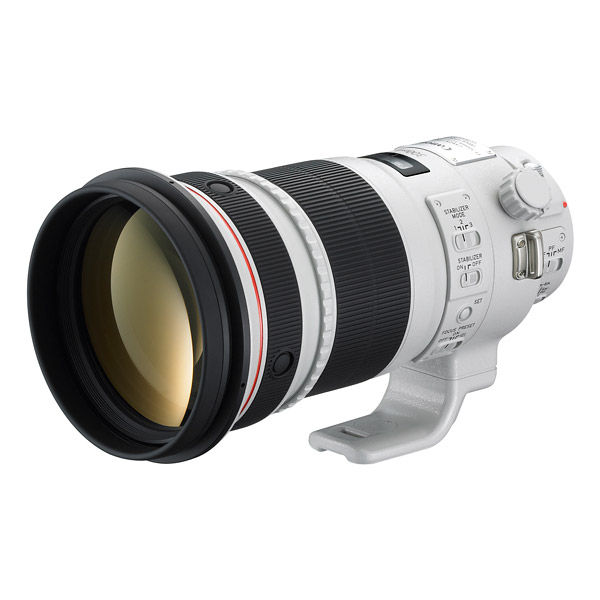 | Canon EF 300mm f/2.8 L IS II USM Pros: crystal clear, optimum efficiency even with multipliers, compact and lightweight to be a big lens, AF and stabilization to the top Cons: high price, but justified by the quality of optics Opinion: In my opinion it is the best super telephoto for travelers: it is much easier to carry around than the 500 and 600mm (weighs 2.4kg and is 24cm long, compared with 40-45 cm of the canvases more) and has a truly extraordinary performance . The image quality is really perfect from corner to corner even on the most demanding sensors, such as the 50 megapixel Canon 5Ds, and you can take advantage of the f / 2.8 when taking pictures in low light and have a great separation from the background. Mentra the previous version leaked a bit of quality with multipliers, the Canon EF 300mm f / 2.8 L IS II USM also remains incredibly crisp with 1.4x and 2x TC, to the point of being fully usable on any sensor also multiplied to 2x and shooting at full aperture. The excellent performance with multipliers makes it very versatile: with one lens you can have 300 f / 2.8, 420 f / 4 and 600 f / 5.6, covering most focal lengths that can be used in nature photography. The build quality is to massimlevels, solid as a rock and tropical conditions; the autofocus is the fastest you can get, and the excellent image stabilization makes it easily usable without a tripod. The only "flaw" that you can find is the very high price, almost double compared to the previous version, but justified by the performance of the highest level. sent on May 17, 2016 |
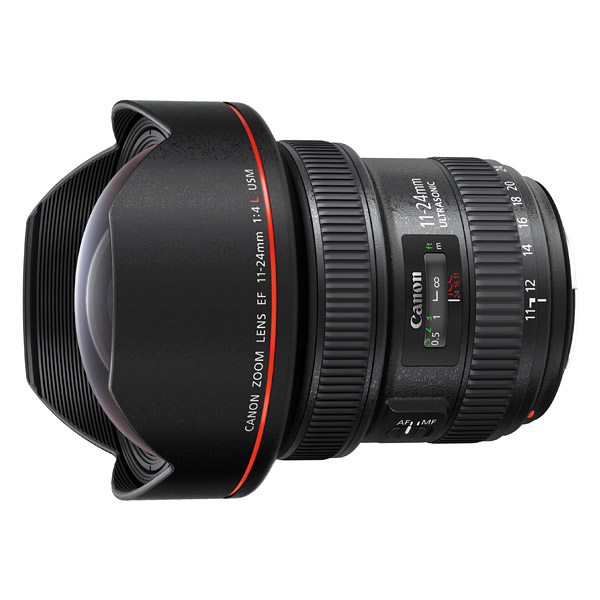 | Canon EF 11-24mm f/4 L USM Pros: image quality, angle of view Cons: weight, size, price Opinion: The Canon 11-24 L is the most extreme wide-angle zoom (non-fisheye) currently on the market; the angle at 11mm is really spectacular! The image quality is very good, although not to the spectacular levels of the Canon 16-35 f / 4 IS: the center is crystal clear; in corners it is good about 20-25 megapixel sensor, while on 50 megapixel sensors and over we see a bit of decay in the corners, but nothing disastrous. The build quality is at the highest level, and the autofocus is fast and quiet; the huge front lens is a beauty also to be seen :-) weight, size and price are very high, but if you like the extreme wide-angle Canon 11-24 is really the best you can get, in my opinion is a lens absolutely advisable despite being so 'difficult'. sent on May 15, 2016 |
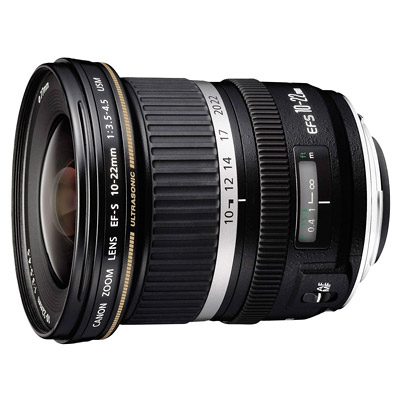 | Canon EF-S 10-22mm f/3.5-4.5 USM Pros: good range of focal Cons: chromatic aberration, not razor sharp corners, relatively high price Opinion: I bought this wide angle several years ago; at the time there were few wide-angle lenses for APS-C and it was a natural decision, but nowadays I would not recommend. The build quality is good (despite being light and compact) and autofocus, the ring-type USM is quick and quiet; the image quality at the center is good, but in the corners the sharpness is never excellent - even stopping down - and there is a visible chromatic aberration. Spending less you can take the Sigma 10-20 f / 3.5 which has similar image quality but constant aperture of f / 3.5, or the excellent Sigma 8-16, much wider and sharp from corner to corner. Finally, Tokina offers a 11-20 f / 2.8, brighter and sharper the Canon 10-22. I resold after a couple of years to replace it with the Sigma 8-16 that I still use today; if you are looking for a wide angle for APS-C I recommend you assess the suggested alternative Sigma and Tokina. sent on May 14, 2016 |
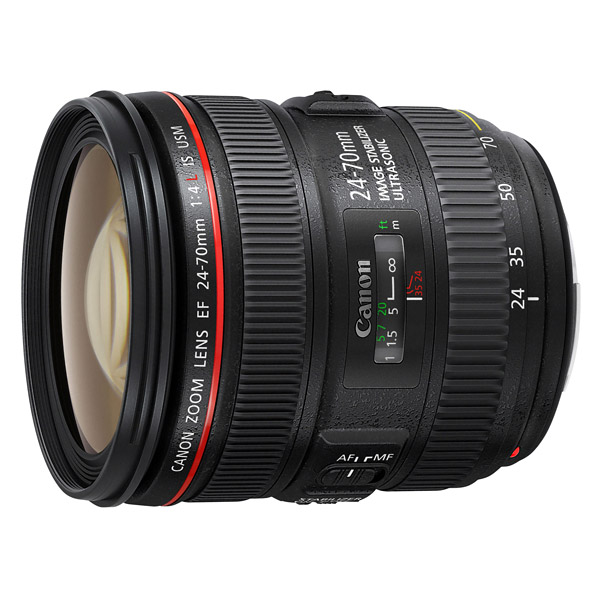 | Canon EF 24-70mm f/4 L IS USM Pros: image quality, construction, excellent AF and stabilizer, outstanding macro capabilities, low price Cons: focal range a little less versatile compared to 24-105 Opinion: Initially this goal I was not particularly thrilled since size, weight and price are similar enough to 24-105mm already on the market for years; But using it I had to reverse. In terms of image quality, it is better than the 24-105, in particular with very short focal; closing a little the aperture (f / 5.6, f / 8) has positive effect on the whole frame, the level of the much more expensive Canon 24-70 f / 2.8 II. Autofocus is fast and stabilizer is very useful on these focal; personally I prefer also to 24-70 f / 2.8 due to the presence of the stabilizer, as well as for the excellent quality / price ratio. A distinctive feature of this goal is the ability to use it in macro photography with excellent results: the magnification ratio reaches 0.70x (compared to most standard zoom reaches 0.20x). Even at this magnification, very close to 1: 1, the qualityA picture remains good; the angle is quite wide, so it's used for macro acclimatized and you can hardly get the classic macro with blurred background and uniform. In my opinion currently the best standard zoom lens in the Canon system. sent on May 13, 2016 |
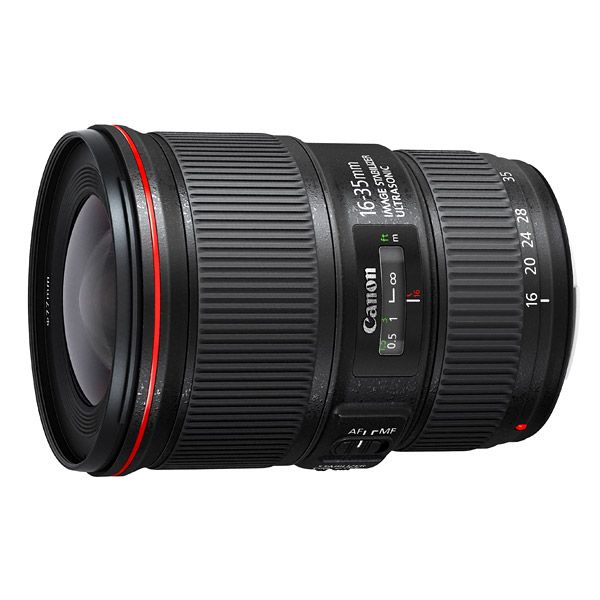 | Canon EF 16-35mm f/4L IS USM Pros: excellent image quality, build quality, stability, quality / price ratio Cons: nobody Opinion: The best wide angle produced by Canon, and one of the best ever wide-angle zoom ... the image quality is outstanding, is much sharper than 16-35 f / 2.8 II and even better than the expensive 11-24 f / 4 L . The sharpness is excellent from corner to corner, even at full aperture (about 20-24 megapixel sensors); on the 50 megapixel Canon 5Ds remains very good at f / 4 and excellent throughout the frame at f / 8. Besides being crystal clear, it is almost entirely free of chromatic aberration. All these qualities are combined with a professional-grade construction quality, fast and quiet AF, and image stabilizer, a rare feature on the wide-angle (which I personally find it very useful!). The only area in which this lens has some limit is night photography, where the f / 4 aperture forces us to raise the ISO; other than that it is a lens to perfect and is available at a very reasonable price. sent on May 09, 2016 |
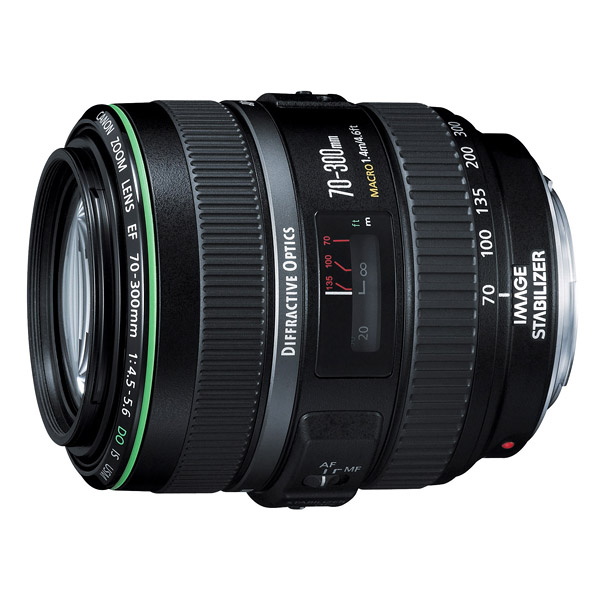 | Canon EF 70-300mm f/4.5-5.6 DO IS USM Pros: compactness, build quality, good AF and stabilizer Cons: very poor image quality, exaggerated price Opinion: The 70-300 DO is one of the few to use diffractive optical lenses, which give the opportunity to significantly reduce weight and bulk, was at the expense (at least in this goal) image quality. From a construction point of view it is equivalent to the optical L series: sturdy, USM autofocus type 'ring-type USM' (the fastest), image stabilization and a green ring that distinguishes it from the L series, which instead have the ring red. The dimensions are very small, it is just 10 cm long against the other 13-14 70-300 and more than 17 of the 70-200 f / 4; It weighs just 720g despite the robust construction. Unfortunately the image quality is very poor: the sharpness is poor, as well as the contrast; the limits of this perspective were already clearly visible on the SLR a few years ago (I had tried on the Canon 20D), and certainly would not recommend it on the current sensors, very dense and 'demanding' in terms ofthe optical quality. All this is coupled with a shocking price of around 1500 euro, a figure with which you can buy much higher optical. I do not recommend this. sent on May 08, 2016 |
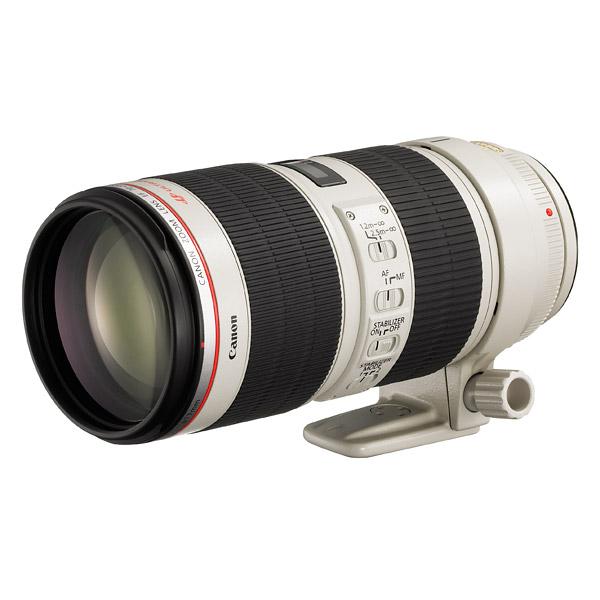 | Canon EF 70-200mm f/2.8 L IS II USM Pros: sharpness, excellent AF, image stabilization, brightness Cons: high price (but in line with the quality of the lens) Opinion: Although for nature photography I prefer longer focal lengths (eg. 100-400), I got to try this objective and has made a very good impression. No multipliers, the image quality is excellent at all focal lengths and all diaphragms, even at f / 2.8. With the multiplier 1.4x it is still fully usable, even at full aperture, while showing a slight loss of sharpness. Like all Zoom, a little fatigue with 2x multiplier; open aperture sharpness to 400mm is not optimal, but it becomes fully usable closing at f / 8. The autofocus is very fast and it also remains good with multipliers (retains the AF even with 2x); the build quality is at the highest level. And '' solid 'enough, it weighs 1.5kg; if you are looking for a compact and lightweight to carry around 70-200 I recommend the excellent 70-200 f / 4 IS, while if you are interested in the maximum brightness, provided you bring with you a little more pesor, the 70-200 f / 2.8 IS II is currently the best 70-200 that you can take to a Canon camera. sent on May 07, 2016 |
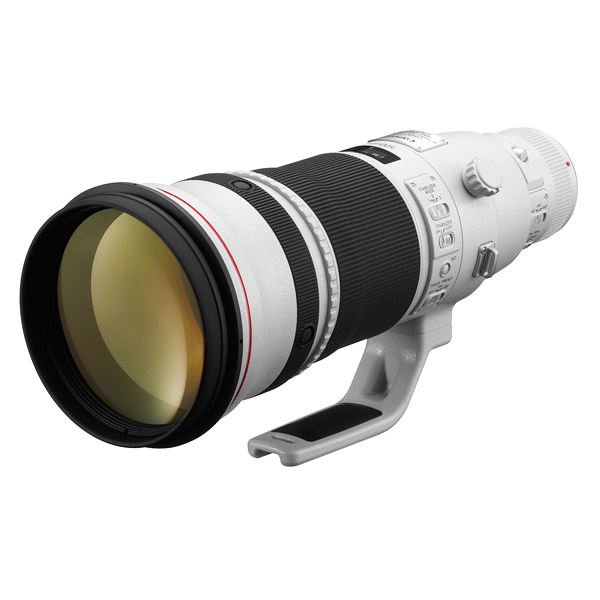 | Canon EF 500mm f/4 L IS II USM Pros: crystal clear, very low weight (for a 500 f4), af, stabilizzore, construction Cons: nobody Opinion: Excellent lens from all points of view! compared to the previous model, it is much lighter - 3.2 kg are very few for a 500mm f / 4 and make it usable enough freehand, thanks to the excellent image stabilizer. The autofocus is lightning-fast and can be made even faster by using the focus limiter. The build quality is at the highest level and of course is weather sealed. In terms of sharpness, it is still better than the previous model using no multipliers both are perfect, but with the 1.4x multiplier 500 f / 4 II has a certain advantage, in particular on cameras with more dense sensor, and with the 2x advantage becomes evident. The new 500 + 2x is usable even at full aperture (f / 8), while with the previous version (2x + TC) had to close at least f / 11 to obtain a good sharpness. A good buy (although very expensive) for those dedicated to the photography of birds; the only dubOrganic may be the choice between the 500 and the 600 II II, which has the same characteristics of quality and strength but a slightly higher magnification (however, size and weight are higher). sent on May 06, 2016 |
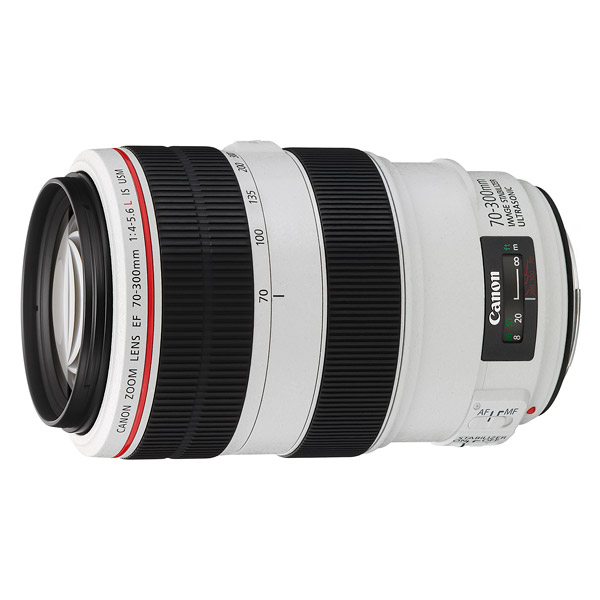 | Canon EF 70-300mm f/4-5.6 L IS USM Pros: compact, excellent build quality, good AF, stabilizer Cons: very high price (compared to the performance), dim, image quality is not at the level of obiettidi similarly priced Opinion: Taking into account the cost and the fact that it classifies as a Canon 'L lens', frankly I expected better. Let's start with the positives: the build quality is very good, solid as you would expect from Canon's professional lenses, but at the same time rather compact; Autofocus is fast enough and has a great stabilizer. The image quality is good, but - by my standards - not great; improves stopping down by 1 stop. From an objective that costs 1200 € I expected better: if we compare it to another perspective of the same range, the Canon 70-200 f / 4 L IS, the build quality is equal but in terms of image quality 70 -300 (or at least the specimen I tried it) does not reach the excellent sharpness of the 70-200 f / 4 IS. Personally I would prefer the 70-200, possibly leading to a multiplier 1.4x to cover focal lengths up to 280mm, unless the maximum compactness circles, where the 70-300 has a certain advantage (closed misura against just 14cm 17cm or 20cm 70-200 70-200 + 1.4x). sent on May 05, 2016 |
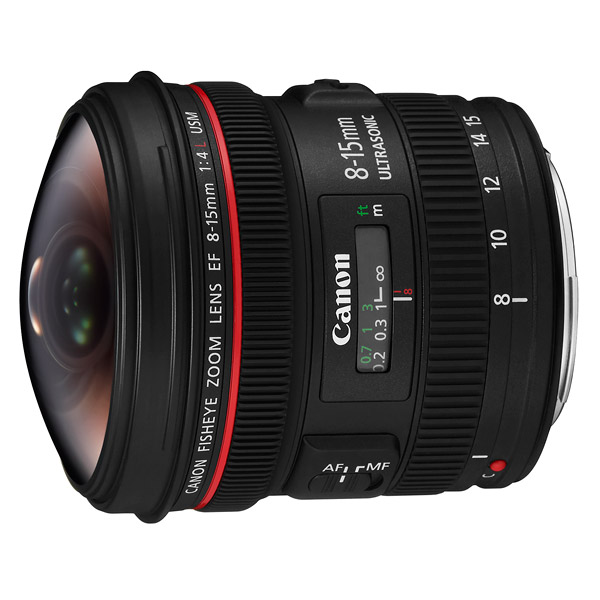 | Canon EF 8-15mm f/4 L USM Fisheye Pros: excellent image quality, a choice of circular and diagonal fisheye Cons: Diaphragm not bright (for those who make night photos) Opinion: I used this fisheye in different trips and I was very satisfied; compared to the previous Canon 15mm f / 2.8 it is vastly superior in terms of image quality and construction quality. The ability to choose between circular and diagonal fisheye is very innovative and was convenient on several occasions; personally prefer the diagonal fisheye, but in some cases I was able to exploit the fish move and I was back comfortable have it available in the same goal. Another distinctive feature of this lens is its outstanding macro capabilities; It has a 0.39x magnification ratio that lets you take great macro acclimatized. The only fault I could find is the f / 4, dim, that in the night photos obliged to raise a lot of the ISO; for those who snaps prevantemente day is not a problem. He 'a specialized lens, but for those who love the fisheye or macro wants to devote himself to set recommend it very much! sent on May 04, 2016 |
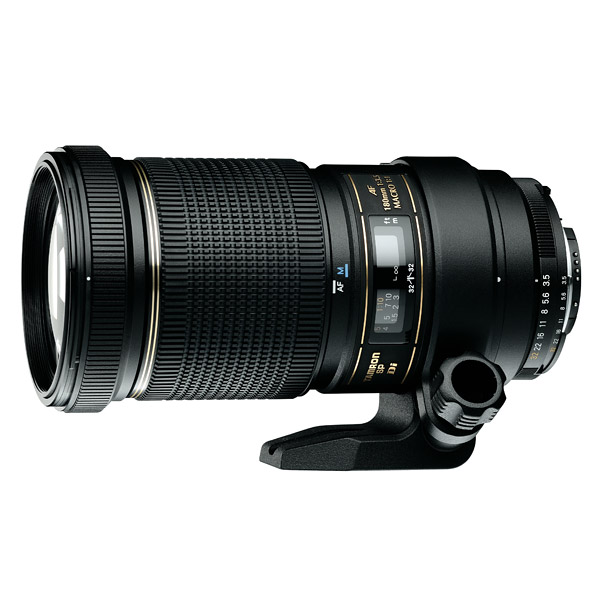 | Tamron SP 180mm f/3.5 Di LD Macro Pros: sharpness, value for money, working distance, separation from the background Cons: af slow, not weather sealed Opinion: I use it for about a year (before I had the Canon 180 Macro L) and I'm very satisfied ... the image quality has nothing to envy to the Canon; f / 5.6 on it is crystal clear, and the most used in the macro diaphragms (f / 8, f / 11) is perfect. The long focal length allows you to have a great working distance and good bokeh; despite being a 180mm it is fairly light and compact (compared to the equivalent of other brands). Other advantages of this objective are the tripod ring, which allows you to quickly switch from horizontal to vertical shots, and the possibility of having the aperture ring: the Nikon version is equipped as the dial to adjust 'manually' the diaphragm, this feature it is very important for those who use it with adapters because it allows to use adapters of electronic lacking and without compatibility problems. I use it on Sony (version Nikon + adapter) and it works perfectly, while the Canon (which required a class tatore more sophisticated) had frequent problems. The only 'defects' I can mention are the lack of weather sealing and slow AF, but in macro photography is not important, since it always works in manual focus. In my opinion it is currently the best macro lens you can buy, if you take into account del'ottimo quality / price ratio! sent on May 03, 2016 |
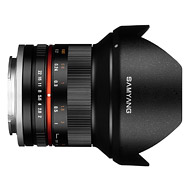 | Samyang 12mm f/2.0 NCS CS Pros: reduced price, small and light, excellent image quality Cons: nobody Opinion: I purchased the Samyang 12mm f / 2.0 to take night photos with my APS-C and I was really surprised by the quality of this goal; even at full aperture is equal to or greater than optical far more expensive that I've used in the past (Canon 16-35 f / 2.8 II and Canon 24 f / 1.4 II). The value for money is outstanding, taking into account that is around 300 Euros! It 'a lens totally manual (but for landscape photos is not a problem), is mounted on mirrorless without adapters and is very compact and lightweight. Highly recommended! sent on January 31, 2016 |
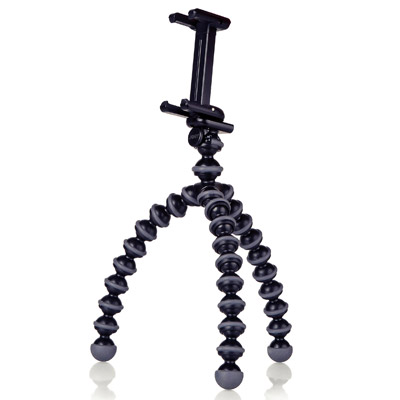 | Joby GorillaPod GripTight Pros: economic, compact, lightweight Cons: nobody Opinion: The best mini-tripod for smartphones! It 'really tiny and lightweight (70 grams including the head), but is able to seamlessly support all smartphones, including models with screens from 6.5 ". The attachment system allows you to mount the smartphone in seconds and without difficulty; the flexible legs help adhere the tripod on any surface. Obviously it is suitable only for smartphones and compact read, but within it is great - I use it for several years with satisfaction. A final positive note is the price really very content. sent on July 19, 2015 |
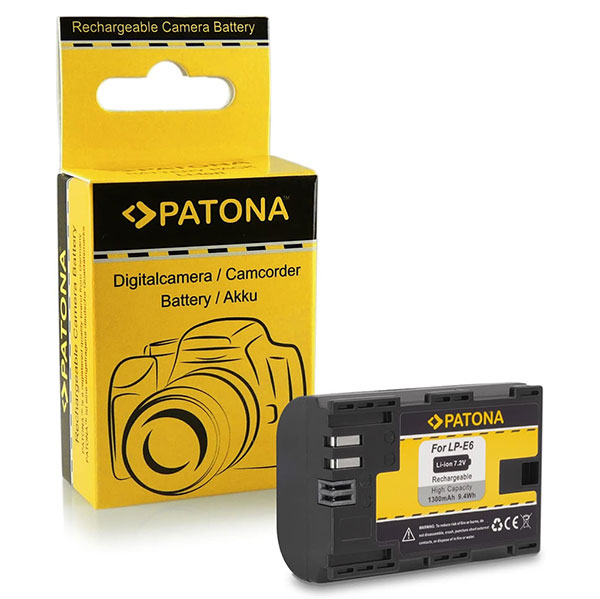 | Patona LP-E6 Pros: bargain price :-) Cons: less capacity than the Canon LP-E6 Opinion: Batteries Patona have a great strength: the price! The Patona LP-E6 costs a quarter of the original (with about 28 euro will bring home the pack of two batteries, then we are at 14 euro / battery against the original 50/60). I used this battery for about a year with no problems, apart from the length a little less than the original, as also stated in the technical specifications (9.4 Wh compared to 13 Wh of Canon). I 'a good product, although recommend spending a little more to take the Patona LP-E6 Premium version with capacity 11.5 Wh. sent on June 19, 2015 |
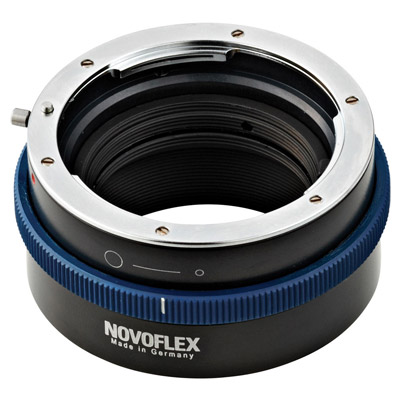 | Novoflex NEX/NIK Adapter Pros: Full compatibility with both optical series D series G Cons: the engagement lever objective too small, lacks the front cap Opinion: I chose the Novoflex NEX / NIK Adapter to mount Nikon lenses on my camera Sony; This adapter is compatible with both the optical series D (older ones, who still had the physical aperture ring) that with the optical series G (all made in recent years, without an aperture ring). The blue ring / blue this adapter allows you to change the aperture also on optical G; all this is done purely mechanical (not electronic contact) so it is completely free of problems 'electronic' which have more sophisticated adapters. Overall performs its function well; the main flaw I found is that the handle attachment / detachment of the goals is very small and hard, quite uncomfortable to use. It comes only with rear cap and then have to buy another cap if you want to store it without lenses fitted, is not a serious thing but it is quite absurd that Novoflex face caps on the economy of an adapter enough costI like this. sent on June 04, 2015 |
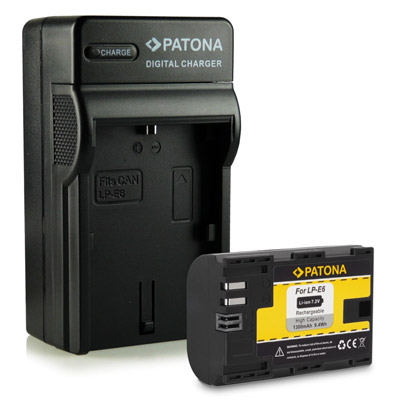 | Patona 4in1 Pros: very versatile, compact, economical Cons: slower than the original charger Opinion: I used this model for a couple of years and I consider it a great choice. It 'very small (almost half of the Canon) and allows you to load the camera batteries with four different systems: the classic cable from the wall, with the cable car (cigarette lighter), with a full size USB port or finally with a micro-USB. For travelers, it's spectacular - before I carry around is the Canon LC-E6 (from the wall) that the Canon CBC-E6 (by car), now with only one model, of small dimensions, can be loaded from any outlet ; you can even use the same micro-USB cable for charging the phone, connecting it to a wall adapter or a computer. The only flaw I found is that it is slower than the original charger. Currently I do not use it because the Sony that allow use to charge the battery directly via the camera, but I recommend it highly for anyone who has to use an external charger. sent on June 04, 2015 |
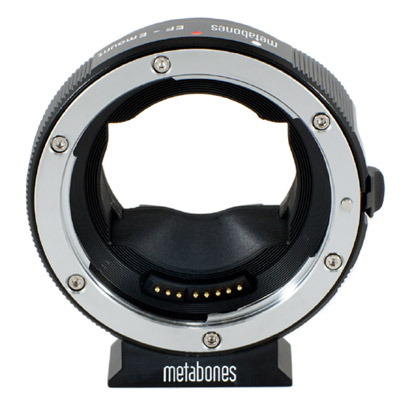 | Metabones EF to Sony NEX Smart Adapter (Mark IV) Pros: allows the use of EF lenses on Sony maintaining control of the diaphragm Cons: Because frequent blocks, very high price, the AF becomes unusable Opinion: The Metabones EF / NEX IV is one of the adapters Canon-Sony best known; It transmits all data to the camera lens and allows you to keep the automatic, although with limitations. The AF is slow to the point of being unusable (but this is already stated on the same site Metabones, so no surprise); The biggest problem I found is that with some lenses because frequent blocks, enough to make it unusable. In my case (A5100 Sony camera), it works quite well with the Sigma 8-16, while with the Canon 180 Macro 50% of the time the camera stops completely and the only way to restart it is to remove and re-attach the lens; the numerous firmware updates applied over time did not improve the situation (I eventually solved by replacing the 180 with a Canon Tamron 180 + adapter for Nikon Novoflex, with manual aperture ring on the lens). In conclusion, if you want to buy it before you do a little research on the web per ensure that it works well with the combination camera / lens on which you want to use! sent on May 17, 2015 |
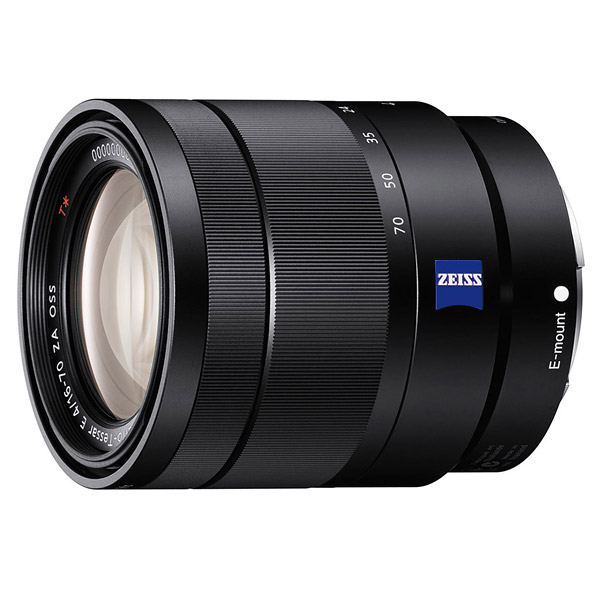 | Sony Vario-Tessar T* E 16-70mm f/4 ZA OSS Pros: Compact and lightweight, fast and silent AF, sharp in the center, f / 4 constant Cons: corners slightly crisp, fairly high price Opinion: The Sony 16-70 f / 4 is exceptionally compact and lightweight (only 300 grams!), And offers an excellent range of focal coupled to the diaphragm constant f / 4. The AF is very fast and totally silent; image stabilization is a big help in handheld shooting. The image quality at the center of the frame is excellent for any aperture and focal length, while the corners are quite soft wide open at the 16 and 70mm focal lengths; improve the focal intermediate and, at all focal lengths, you can get an acceptable sharpness in the corners, closing to f / 11, the diaphragm I use the most in landscape photography. Overall, a good goal, but not perfect. sent on February 12, 2015 |
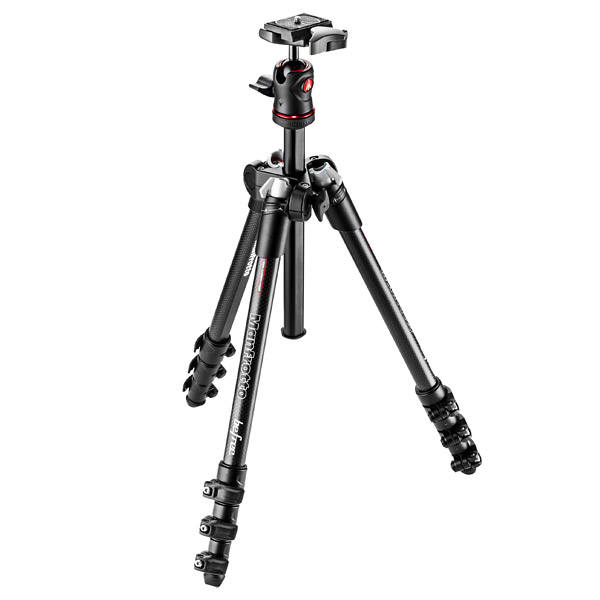 | Manfrotto BeFree Carbon Pros: lightweight, compact, rugged enough to optic landscape, macro or reportage Cons: relatively expensive, not very solid feet (they tend to slip off) Opinion: The BeFree Carbon is currently my only tripod; I chose it, after having had the aluminum version, for its extreme lightness, combined with small size and good strength. Obviously not a tripod to super telephoto lenses or other thinking, but for those who make pictures of landscape, macro, reportage and similar is ideal: easy to take with you and rugged enough for optics up to 2 kg + camera. The carbon fiber, in addition to being very nice from the aesthetic point of view, it also has the advantage of not become frosty when using the tripod at very low temperatures. sent on December 10, 2014 |
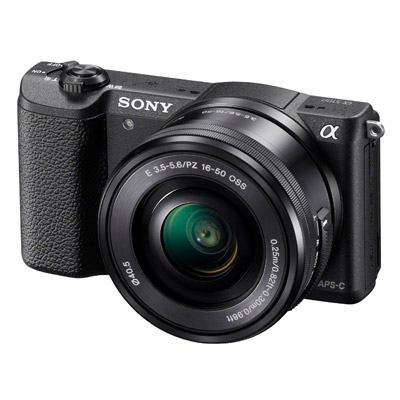 | Sony A5100 Pros: Very compact size, light weight, adjustable screen, quality sensor, large feature equipment, fast AF, USB recharge, 6 FPS burst Cons: Optical Park (native) still Limited Opinion: The Sony A5100 combines advanced features and quality sensor (one of the best APS-C currently circulating) with an extremely compact and lightweight body. The ergonomics is clearly not that of a reflex, but for those who use it almost always on tripod is not a problem. The 180-degree swivel screen is a huge help in macro and landscape photography. You can extensively customize every aspect of the camera, including the functions of various buttons, a surprising completeness for a camera of this headband! Finally, you can recharge it directly via USB, without having an external charger. Together with the A6000, it is among the first Sony mirrorless to be equipped with AF phase detection, as fast as that of the reflex and able to keep the subject in focus during the burst from 6 FPS. The camera itself in my opinion has no major flaws, the main limit is in the optics: the choice of native optics is still decidedly inferior to Canon and Nikon, limiting the possibilities of use in some fields. However, Sony is rapidly expanding its offer, and in the meantime it is possible to use the optics of any brand through adaptors (but renounding to AF). The advice to those who do landscapes, macros and travel photos! sent on September 26, 2014 |
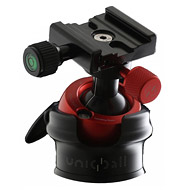 | UniqBall UBH 35 Pros: Compact, lightweight, rugged; it can replace both a gimbal head and a ball head Cons: lack of friction, not perfectly balanced as gimbal heads Opinion: The UniqBall is a very unusual ball head: it has a smaller ball inside a second, bigger ball, that can be locked indipendently. The purpose of this peculiar design is to offer a smaller, lightweight alternative to gimbal heads: the UniqBall weights about one half of the Wimberley and it is much more compact. How does it work? First, you level the camera using the larger ball, then you lock it and you can use the second ball to move the camera up and down and left-right; essentially, you get a two-movement ball head. The possibility of locking the third movements allows to avoid tilted horizons, and it makes much easier to use large supertele lenses on the ball head. The lens is not completely 'weightless' as with gimbal heads, but it is much more stable than traditional, three-movements ball heads and there is much less risk of dropping the lens due to the weight falling forward. Another advantage of the Uniqball is that it can also be used as a traditional ballhead with smaller lenses, while gimbal heads are exclusively for superteles. It is not perfect - it completely lacks of friction on the main ball, that is not a problem with teles, but makes a bit difficut to make precise adjustments in landscape and macro photography. That said, even with these small shortcomings, it is a great choice for photographers who travel with big lenses: instead of carrying a gimbal head plus a ballhead, you can carry a single UniqBall head that replaces both. sent on August 23, 2014 |
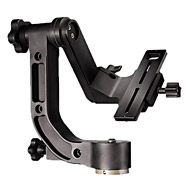 | Photoseiki TB-101 Pros: great for super telephoto, robust, relatively inexpensive Cons: cumbersome, difficult to buy Opinion: The Photoseiki head is a rocker produced in Italy; as the Wimberley, offers exceptional support for heavy canvas (400 by 2.8 in), but it was available at a much lower price, approximately 400 Euros against 700 of the competitor. It 's very strong, I personally tested even with the monstrous 200-500mm Sigma f / 2.8 (weighing 16 kg) and has held up the enormous weight with no problem, always ensuring smooth movement and precise! The main problem is that currently (2014) is no longer sold by any store, you can only find in used. sent on August 15, 2014 |
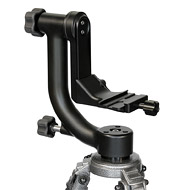 | Wimberley WH-200 Pros: ideal for super telephoto, robust Cons: bulky and relatively heavy Opinion: Wimberley was the manufacturer that has released the rocker heads and their product is one of the best: for those who use heavy canvas (400, 500, 600 and beyond), the rocker heads are superior to any other type of head. The WH-200 allows the use of the tele heavier without any effort! The only 'defect' of this head, common to all the gimbal, is the bulk and weight; despite being half a kg lighter than the previous version still weighs 1.4 kg and is 23 cm high. Highly recommended for those who use heavy canvas, while from 300 down 2.8's also a good ball head or the Wimberley Sidemount is sufficient. sent on August 14, 2014 |
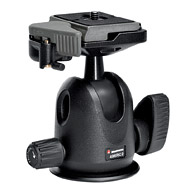 | Manfrotto 496 RC2 Pros: lightweight, compact, robust Cons: no one in this price range Opinion: For 75 euro it is hard to find better: this is a great all-rounder head economical, suitable for both landscape use that for photos with moderate tele (I used it with no problems with the Canon 100-400). A bit on the edge you can get to ride inside a 300 2.8, although for these focal council heads more professional. It weighs 100 grams more than the 494 and is a little bigger, but it is also more solid and overall it's still a head easy to take with you, without becoming too heavy backpack. Very recommended! sent on August 11, 2014 |
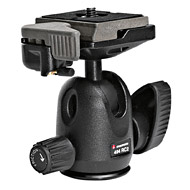 | Manfrotto 494 RC2 Pros: lightweight, compact, economical Cons: clearly is only suitable for small optics, within 200mm Opinion: I took this model to have a ball head very compact and light enough to carry with you (note: currently I 'replaced' with the head of the Manfrotto BeFree, which is almost identical but has no clutch). It 'a head suitable for use in landscaping or general objectives for pictures with light, up to 70-200 f4 or the 70-300 f / 5.6 (if you want to have maximum stability). Overall I was fine; I had some problems just after a heavy rain: the ball was wet and also tightening the screw was not fully blocked, probably due to the reduced surface on which to pressure; once dried is back perfect. sent on August 11, 2014 |
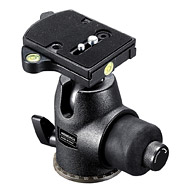 | Manfrotto 468 RC4 Pros: extremely strong, light weight Cons: relatively expensive, it is not the best solution for supertele Opinion: The ball heads from Manfrotto Hydrostatic have exceptional strength that allows to obtain a flow rate of 16 kg (16 kg and talk about real, not unrealistic numbers typical of Chinese brands!) With 'just' 700 grams of weight. And 'the right choice for those who possess both optical read that very heavy telephoto lenses (400 f / 2.8, 600 f / 4) and want to use a single head for all; from this point of view the Manfrotto 468 RC4 is super. If, however, you only have supertele or you are willing to use two different heads, I recommend you take a head rocker from dedicated only to tele: even the best ball heads are far from the stability and freedom of movement that you can have only one Wimberley head type or equivalent. sent on August 11, 2014 |
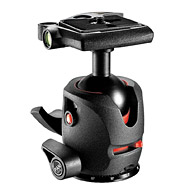 | Manfrotto 054 QR2 Pros: robust enough light, cheap Cons: I personally prefer the more compact heads, not using it for large paintings Opinion: The new Manfrotto 054 heads are made of magnesium to reduce weight: the 054 QR2 weighs just 0.61 kg but has a capacity of 10 pounds. E 'available with various quick release plates; my favorite is the QR2 (Plate 200PL-14) because it has fairly small and does not protrude from the bottom of reflex. The value for money is excellent, 150 Euros are a very low price for a head of this level; is very robust and has good precision. The only 'fault' of this head is that it is too large for use strictly landscape (in this context, I prefer the small 494 or 496); instead it is a great choice for those who want to use with telephoto lenses. sent on August 11, 2014 |
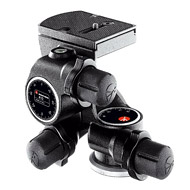 | Manfrotto 410 Pros: extremely accurate, ideal for macro; not too expensive Cons: heavy and cumbersome Opinion: The Manfrotto 410 is by far the best head I've ever used for macro photography. The rack system allows you to compose and shoot with great precision; the absence of systems for locking / unlocking means that there are no differences between the selected position and the position 'blocked' (with most of the ball heads or three movements when locking the head this moves a fraction of a millimeter, which in the macro is enough to change a little bit the picture, on the contrary the geared heads are 'automatically' locked to the desired position without the game). Costs about 180-200 Euros, a great price considering the quality of this head; there are also more robust versions (405 and 410) but are more expensive and heavy, when the 410 is already more than sufficient to withstand even professional SLR with macro long. It 'a very specialized head: the council only in the macro, as it is quite slow to use, and relatively heavycumbersome, this is the price to pay for having such a precision. sent on August 11, 2014 |
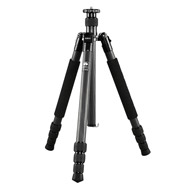 | Sirui T-1204X Pros: Lightweight, compact, block 'automatic' tilt legs Cons: Not suitable for heavy lenses (the declared capacity is very optimistic) Opinion: I tried the Sirui T-1204X with a friend and I made a good impression is very light and as my Manfrotto BeFree, you can close your legs turning 360 degrees, eliminating the clutter of the head (assuming you use small ball heads). The build quality is very good, although like all Sirui has a pruned declared decidedly optimistic (10 kg!), In practical use, there caricherei than 3-4kg, as with other tripods in this category. The lever to lock the angle of the legs is 'semi-automatic', a slightly more practical than manual BeFree. I'm not a lover, however, blocks the leg loop of Sirui, which I prefer to stick to those used by other brands. sent on August 02, 2014 |
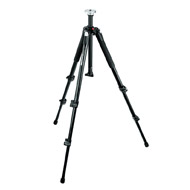 | Manfrotto 190 XB Pros: exceptional quality / price ratio, robust, minimum height 8cm Cons: relatively heavy (compared to the carbon version) Opinion: Hard to find a sturdy tripod that this figure: at the price of EUR 130-140, 190 XB tripod is a great choice as 'all-rounder', can also be used with telephoto lenses and cameras quite 'full-bodied'. It is very light if we compare it with the (much more expensive) carbon models, but it's still half a pound less than the 055. Like the other models XB series has very short column to flatten out on the ground. sent on August 02, 2014 |
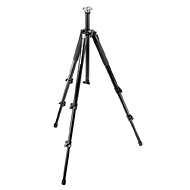 | Manfrotto 055 XB Pros: robust, economical, minimum height 7cm Cons: heavy and cumbersome Opinion: The XB 055 has long been my main tripod; has a very low price but has been able to sustain without problems 1DsIII + 600 f / 4! The column can be easily shortened, dropping flat on the ground (much preferred this system over the column 'tilting' of 90 degrees). The main problem of this tripod is the weight (2.3kg, which become abundant once mounted 3 head) and bulk; I recommend it for those who do not travel long distances (es.foto from the shed), while it is not a good choice for hiking and travel. sent on August 02, 2014 |
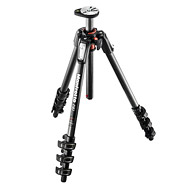 | Manfrotto MT 190 CX PRO4 Pros: strong, lightweight, good build quality Cons: although slight, has added about 300 grams of weight from the previous version Opinion: The new MT Manfrotto 190 CX PRO 4 is a high quality tripod: really solid (you can also use with super-telephoto), reasonably compact when closed but very high when opened, can grow to 160cm, while the minimum height is just 8cm. The weight 1.65kg, it is quite content, though not to the levels of the previous model weighing just 1.30 kg (but was lower and not as robust). In my opinion at the moment is the best product from Manfrotto tripod between the models for all uses, from landscapes birdlife; for those who focuses primarily on landscapes and macro, and does not need the range of the 190 council even more compact solutions, such as BeFree. sent on July 31, 2014 |
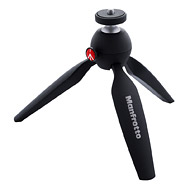 | Manfrotto Pixi Pros: very compact and solid Cons: must be placed on any support, only suitable for smartphones and compact Opinion: I tried briefly Manfrotto Pixi to a friend and I made a good impression; obviously is a product quite limited, both for the flow rate of 1 kg for the small size, but it can be a good choice as a support "emergency" for compact or mobile phones. The built-in ball head is very simple and fast to use and has a good robustness. sent on July 31, 2014 |
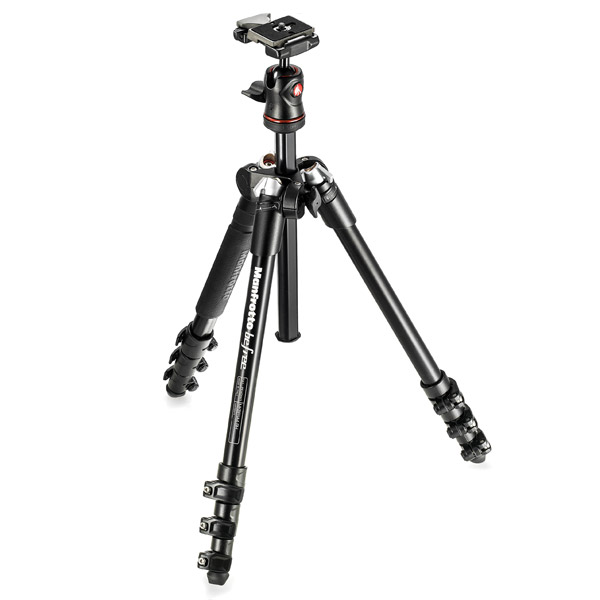 | Manfrotto BeFree Pros: Very compact, lightweight, rugged enough for photos of landscapes and macro, great price Cons: Obviously it is not suitable for super telephoto and heavy lenses Opinion: The BeFree Manfrotto tripod has quickly become my favorite. Once closed it is really very compact and takes up minimal space in your pack, but it is sturdy enough to carry a DSLR or mirrorless with optic landscape and macro, I use it seamlessly with Canon 70D + 8-16, 24-105 and 180 macro . In the articles section you can find the full review :-) sent on July 30, 2014 |
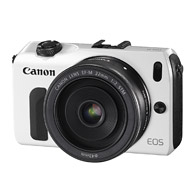 | Canon EOS M Pros: cost (now it's less than 400, lens included), dimensions and low weight, touch screen, good image quality Cons: AF very slow, you can not mount an electronic viewfinder, poor battery life Opinion: I tried it out of curiosity and I was impressed ... the image quality is the same of the current APS-C (on the other hand the sensor is also used on 7D, 650D, 60D); dimensions are very minimal, as well as the weight. The touchscreen interface is really good and in some ways more intuitive and faster than that of the SLR. The main flaw of this camera is the AF quite poor, and the advice for those who make macro, landscapes and other genres 'static', and is not suitable for animals and action. sent on July 12, 2013 |
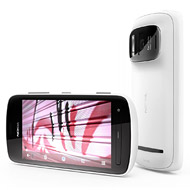 | Nokia 808 PureView Pros: Excellent image quality (the best among all fotocellulari); wide range of manual controls, full HD video, flash powerful. Cons: Symbian operating system, small display, lack of stabilizzqzione optics. Opinion: In terms of image quality, it is clear that the Nokia 808 is the best smartphone on the market. In addition, the camera offers several advanced features that are designed for photographers: 4-stops of exposure compensation, histogram, manual adjustment of ISO, a wide range of shutter speeds. Custom settings for saturation, contrast and sharpening are no longer reset each time you close the camera, but are saved and remain at the values set until you decide to change - another big step forward. | Obviously, there are aspects that could be improved. The shutter speed is longer than 2.7 ", which is a big improvement compared to the time to 1/5 of the previous N8, but appreciate veramemte have time up to 30" would be a great help to your photos lucescarsa, provided of course using a stable support. | The shutter is only visible after the picture: it would be very useful to see however in the process of shooting the shutter speed, so you know when it isneed to raise the ISO. With 38 megapixels, it's pretty easy to get blur. | The objective is very clear and aperture f/2.4 is a great help in low light, but it lacks image stabilization: Nokia has added this feature in the Lumia 920, it would be of great help also in 808. In addition, the macro capabilities are quite limited: many compact can focus at a few centimeters from the lens, while the Nokia 808 has a distnaza minimum focus of about 20cm which gives a magnification very modest. sent on March 07, 2013 |
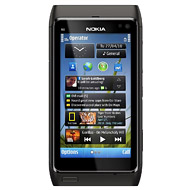 | Nokia N8 Pros: Image quality, xenon flash, HD video, free maps, good build quality. Cons: Symbian operating system, processor slow enough, no protection for the lens. Opinion: The Nokia N8 has the best image quality that you can get with a mobile phone, surpassed only by the new Nokia 808. Great detail, relatively low noise and dynamic range acceptable (good for a cell phone, but obviously far from that of an SLR). On many occasions allowed me to take home photos that otherwise would lose! Other positives are the high quality video and the ability to use Nokia Maps, free maps of 70 countries. Negatives: uses the Symbian operating system which has now passed, the screen is not very big, there is no protection for the lens. sent on October 09, 2012 |
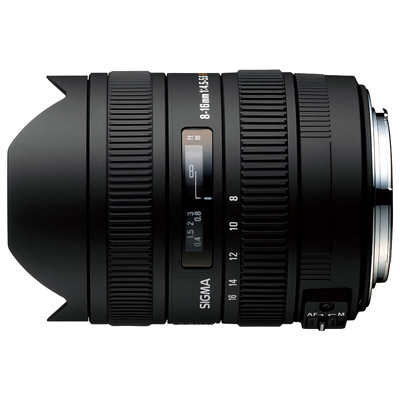 | Sigma 8-16mm f/4.5-5.6 DC HSM Pros: Angle of view, sharpness, good price-performance ratio, AF and zoom internal Cons: Diaphragm is not bright Opinion: I used it for a long time 12-24 on fullframe, and now that I switched mainly to APS-C (Canon 7D), I am very satisfied with his equivalmente APS, Sigma 8-16mm. The image quality is slightly better than the 12-24 first version, thanks to the newer building, it has a good sharpness across the frame. A 8mm angle of field is really extreme, ideal for creative photos, while zooming towards the 16mm compositions can be made a little more restricted. The build quality is very good, the AF is fast and quiet. You can not mount filters, but I personally do not consider it a problem. Overall, I think it is the best available wide-angle for APS-C cameras! sent on September 23, 2011 |
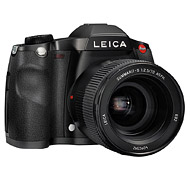 | Leica S2 Pros: Image quality, ratio 3:2, build quality, optics, maneuverability Cons: Very high cost (although in line with the other medium format), slowness, noise at high ISO Opinion: The S2 is the first Leica camera medium format, and offers some interesting features. Unlike most of the MF has a aspect ratio of 3:2, the same as the FF and APS-C cameras, in my opinion more enjoyable. The image quality is outstanding in low ISO, and decays sharply to 640 and ISO 1250 is almost unusable. The autofocus is good, but the burst is rather slow. The park includes some specific optical lenses usable created by Leica, and by July 2011, optical signals MF Hasselblad, Pentax and Mamiya, using the appropriate adapter. Like all medium format camera is a specialized, dedicated to those who are only interested in the top image quality and has no budget problems. In the field of nature photography may have good applications for landscapes, but unless you are sheikhs :-) I think it makes more sense a FF SLR like the Canon 5D Mark II, which costs 1/10 and offers excellent image quality (with 21 megapixels and optical quality of the 5D2 can already make huge prints). sent on July 13, 2011 |
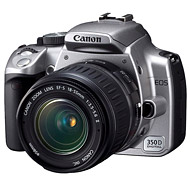 | Canon 350D Pros: Image quality, quality / price ratio, ease of use Cons: Gust very limited, AF modest, obviously lacking all the latest news of the reflex Opinion: The 350D was my first Canon, chosen for its excellent quality / price ratio. The image quality was considered good at the time, and even today it can be considered fully usable: good resolution, acceptable noise within the ISO 1600, good dynamic range. Currently (2011) can be found used at bargain prices, and certainly offers a good alternative to the compact: it is a good way to enter the world of DSLR if your budget is very limited. Despite the slow AF, the lack of live view and a feature set is not huge, I took some of my best photos with this camera! Like all cameras xxxD series, it is very small and light, the construction is quite plasticky but has resisted several ill-treatment. sent on July 13, 2011 |
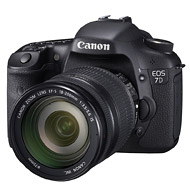 | Canon 7D Pros: Excellent resolution and dynamic range, fast AF, 8 FPS burst, video, live view, good value for money. Cons: High ISO performance good but not exceptional, non-articulated screen. Opinion: I bought the 7D as a second body to be attached to my 1Ds Mark III, and over time has become my main reflex. The image quality is the best you can currently get on APS-C, and is close to that of 1DsIII. The live view with "Silent Shooting", which can replace the mirror lock up, is a valuable aid in macro photography, the video quality is great, although I have used this feature less than I had previsto.rnAutofocus fast, good burst and good value money have made one of my 7D SLR favorites! In future updates, I hope to see a further improvement at high ISO, swivel screen like the 60D and dual-slot CF / SD card. sent on July 05, 2011 |
 JuzaPhoto contains affiliate links from Amazon and Ebay and JuzaPhoto earn a commission in case of purchase through affiliate links.
JuzaPhoto contains affiliate links from Amazon and Ebay and JuzaPhoto earn a commission in case of purchase through affiliate links.May Beauty Be Everywhere Around Me